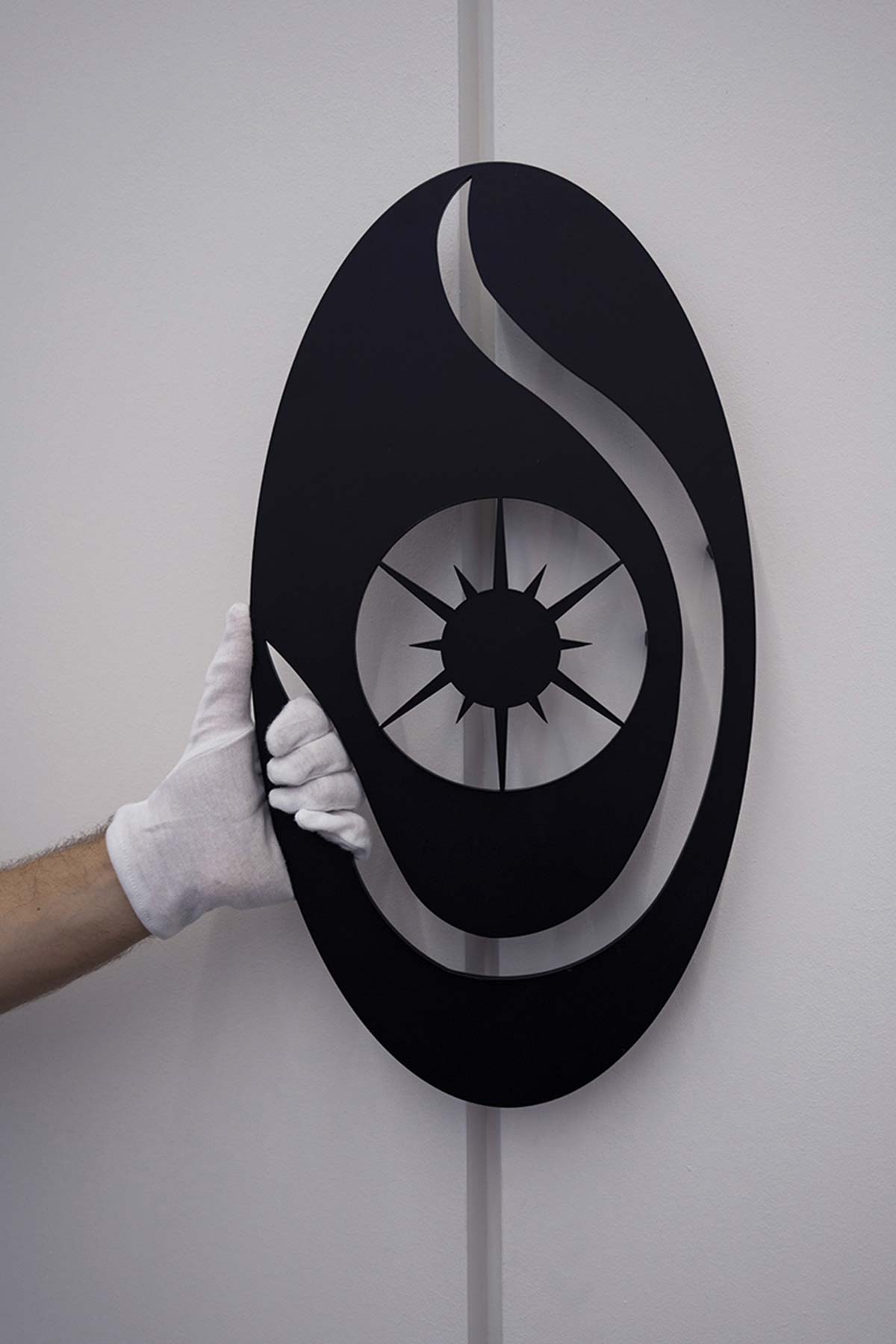The relationship between space and time, relativity, and quantum physics are the themes at the foundation of his work, which combines art, physics, cosmology, and computer science. Through the language of art, he aims to make the invisible visible so that the unknown does not become an antagonist, but rather an opportunity for wonder or poetry. Luca Pozzi (born 1983) is the interdisciplinary Italian artist who has won the first VDA Award – the award entirely dedicated to digital art in Italy promoted by Var Digital Art by Var Group with “Rosetta Mission 2022,” and who has recently completed a commission for a private collector by transforming a deconsecrated church from the Lombard seventeenth century into a secular cross-disciplinary temple that explores the frontiers between contemporary art, quantum gravity, and ancient Eastern divinatory practices.

Graduated in Painting at the Brera Academy of Fine Arts, he specializes in Computer Graphics and Systems. He collaborates with visionary scientific communities, studying quantum gravity and particle physics, which he then translates into hybrid installations with magnetic sculptures, levitating objects, and augmented reality. Exhibiting in museums and galleries around the world, Pozzi is known for alienating images that suggest a sense of suspended time. Among his best-known works are the photographic series “Supersymmetric Partner,” the use of levitation technologies and immersive installations in historic environments.

In 2022, he was part of the group of artists of the 23rd International Exhibition of the Triennale Milano, within the exhibition Unknown Unknows. An Introduction to Mysteries, curated by the astrophysicist Ersilia Vaudo together with the architect Francis Kéré – Pritzker for architecture 2022. The works on display brought to the public, in various ways, the mystery of what we do not know about the invisible processes of a parallel nature, and they did so by seeking a poetic path, also through the words of art.

On that occasion, Luca Pozzi presented the Arkenian Mirror, a work that sought to make visible the language of the cosmos: a table mirror engineered with a particle detector, made in collaboration with the INFN (National Institute of Nuclear Physics) of Turin. A simple mirror, present in everyone’s homes, which has been transformed into a small alien with two dots that light up when the particle coming from the stratosphere (muon) touches its surface. A swarm that constantly crosses us and which we do not realize.

If the artwork Rosetta Mission 2022 was a proper digital Rosetta stele, capable of building a bridge between classical and contemporary digital culture, a meta-place immersive virtual that transported visitors to a space beyond geographic boundaries, even the “Third Eye Prophecy Temple” creates a hinge between worlds that seem unable to communicate. “The work is born out of a private context,” the artist explains, “and its development begins with a friendship with the collector and owner of the space where I was called upon to create the place where the ashes of the entire family will be preserved.”

Located within a private estate in the province of Lodi, the temple created by the artist is the evolution of a deconsecrated Church of the Lombard seventeenth century. Maintaining the sacred aura of the place, Luca Pozzi has created a place that could host ceremonies not necessarily religious, but termbling between practices of divination and very ancient Eastern meditation, interconnected with suggestions coming from the world of theoretical and experimental contemporary physics. And that they also had to do with a place devoted to art.


The result is a space of contemplation that retains the original external architecture while significant changes have been made inside. The original marble altar has been equipped with a muonic scintillator. A high-intensity blue LED lights up when a subatomic particle coming from space collides with its surfaces. The tabernacle hosts tools to activate an ancient divinatory ceremony.

The walls and the ceiling have been restored by restoring the axis of symmetry between the entrance and the center of the altar. They have been converted into a device to track the 64 hexagrams of the I CHING. A digital collage carpet transforms the temple floor into a starry sky, with galactic and astrophysical symbols.


In the center of the “black hole” an electromagnetic levitation platform is installed that keeps a neodymium sphere in perpetual fluctuation. Under the platform, set into the floor, there is a cylindrical compartment that houses a ceramic urn partially immersed in white glass balls, prepared to receive the family relics.








